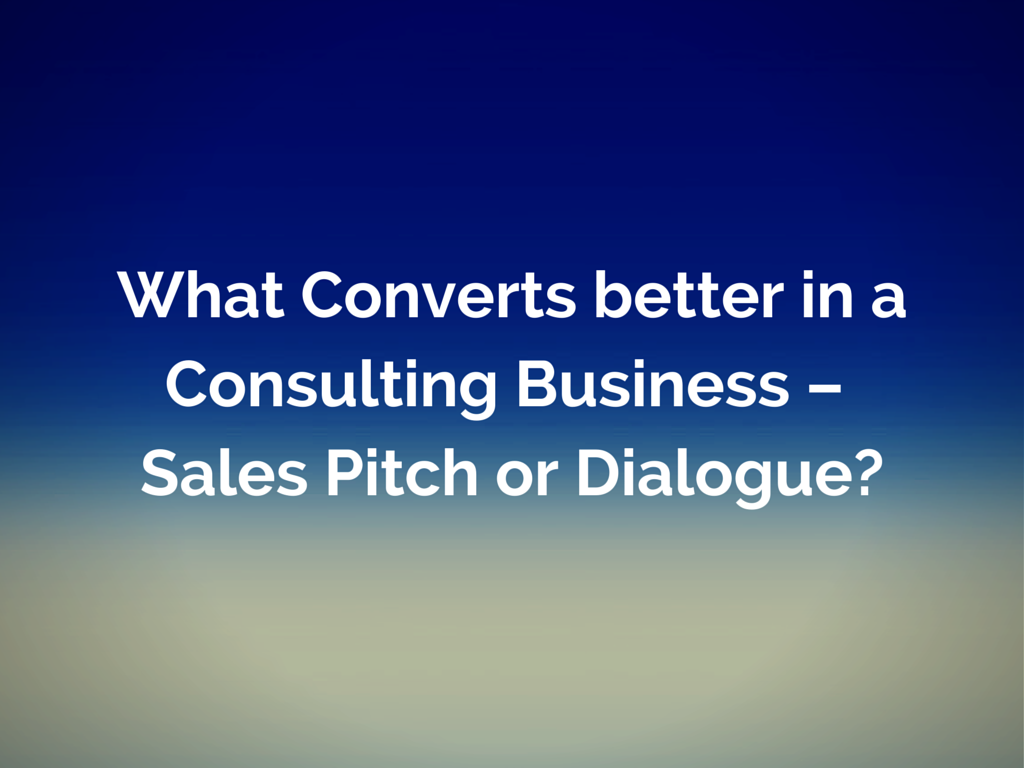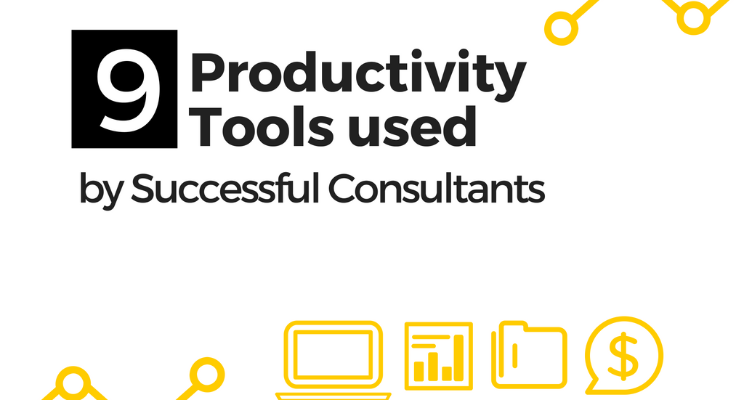For a consultant who is trying to set up a shop and establish himself, or an established consultant with his workbook full of appointments, a big dilemma each consultant faces in handling the leads is “When to switch from sales pitch to dialogue or from interactive dialogue back to sales pitch.”
Consultative selling is not akin to selling products or services in the traditional sense. Given the tough competition and the wide choice of consultants that every business owner has today, it is very important for consultants to know when to switch back and forth from sales pitch to dialogue on a continuous basis.
Client conversion ratio is something many consultants do not monitor at all and treat it as unimportant. This article will not only draw your attention to that, but also help you improve your client conversion ratio and justify the efforts that you put before a lead turns into your client.
Both sales pitch and dialogue involve effort & time of the consultant and have their own advantages as detailed below:
Sales Pitch and its Advantages
Sales Pitch includes a detailed introduction of a service being offered by the consultant. It lets the prospective clients figure out in what ways the services of the consultant are beneficial to their business. The case studies and graphical presentations used in a sales pitch let the prospective clients match their business needs against the services of the consultant.
Some other advantages of a Sales Pitch are listed as under:-
-Sales Pitch is Monologue and Consultant is in control.
-Consultant gets time to prepare and do revisions.
-Consultant has full control over speed and delivery.
-Takeaways can be highlighted to give impact.
Dialogue and its Advantages
In a consulting business, a dialogue is more likely to convert prospects into clients, simply because initiating a dialogue helps a consultant build rapport with the prospects. Consultative selling is selling the concept of “trust building”. The Trust building process involves having a close understanding of the requirements and characteristics the prospective client is looking for to achieve his business goals.
In light of the above, a Consultant starts dialogue with the prospects to build a relationship with them. He listens to their business processes to identify their real business needs. Aligning with the business goals of the prospects helps a consultant to point to better and relevant solutions which in turn increases the chances of conversion.
Other advantages of initiating a dialogue with the client are as follows:-
-With a Dialogue, the prospects can rethink their needs.
-Custom made and fitting for the business.
-Interactive participation of the client.
-Client’s Questions are answered and clarified.
-Helps to figure out client’s preferences.
-Helps to build trust.
So the process once you have a lead and till conversion needs to be carefully planned. The consultant should put in efforts, energy and time in the most effective way. There needs to be a judicious mix of a subtle sales pitch as well as a dialogue and the consultant should weave back and forth as required.
Some instances or Use Cases when a Sales Pitch is to be used
There are many instances when a consultant has to use the sales pitch over initiating a dialogue with the clients. In cases where a consultant is targeting the prospects through email or when he is targeting a large group of audience, a sales pitch is more suitable.
A Sales pitch should also be used when the consultant is introducing a new service to the prospective clients. The Sales pitch helps the prospects understand the structure and long-term benefits of the service.
In addition to the above, the sales pitch should be used in following circumstances:-
-Comparing with an alternate approach- In-house resources or a Consultant?
-Explaining successful implementations in other places.
-Explaining to a large team at the client’s place.
-Showcasing the benefits and explaining what is in it for the client.
Some instances or Use Cases when a Dialogue is to be used
A Consultant is defined as someone who is hired when the issues in business exceed the expertise of client and his in-house resources. Most of the clients who come to a consultant are unable to figure out what’s wrong with their business. During the interview with the consultant, most of the clients fail to define their business issues properly.
Delivering a sales pitch of precooked solutions to such clients is not going to bring any results. A Consultant should therefore use a dialogue in such cases where client’s problems are not clearly defined.
Some other areas where , a dialogue should be used are as listed below:-
-In understanding the client’s business needs.
-In establishing roles of all stakeholders.
-Getting views of different people to the same problem.
-Identifying client’s interest or disinterest in the consultant.
A successful client conversion ratio to the leads will be possible by making a judicious use of both these approaches. It should be the endeavor of the consultant to try and make sure that the communication is effective and every meeting is a step towards understanding each other better and not two people talking their own language with less transfer of information.



